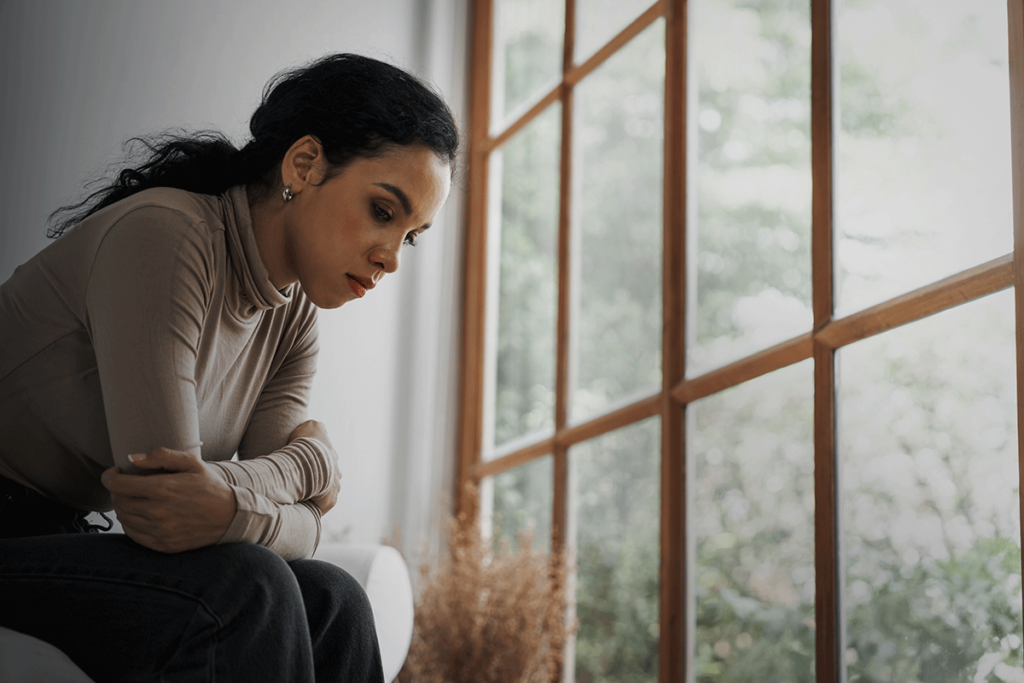Seasonal affective disorder (SAD) is a type of depression that typically affects people during fall and winter when there is less daylight. The short days trigger a chemical change in the brain that results in symptoms of depression. SAD affects about 5% of Americans on average, though in the northern states, twice as many people experience symptoms. Professionals know how to treat seasonal affective disorder and provide relief during seasonal lows.
At Peer Mental Wellness, our experienced professional staff can provide you with evidence-based treatments for SAD. Learning how to deal with seasonal affective disorder will help you navigate the transitions between the light and dark seasons of the year. Everyone is aware of those short days of winter and how they can make life harder, but for those who suffer from the weight of severe depression that can come during this time of year, professional help is the best option. Reach out to Peer Mental Wellness to learn more about our seasonal affective disorder treatment. Call 714.844.5473 or use our online form to speak to one of our caring staff members today.
What Is Seasonal Affective Disorder?
SAD typically develops during adulthood, and the risk increases with age, so older adults suffer more from it than the young.
Experts offer two reasons for seasonal affective disorder:
- Seasonal change disrupts the body’s production of hormones that control mood, sleep, and general well-being, for example, melatonin and serotonin.
- The change in light can throw the body’s circadian rhythm off balance, in part due to increased melatonin. The circadian rhythm is like an internal clock regulating when individuals wake and sleep.
People for whom this season means the return of deep depression often dread it so much that they start to feel anxious and depressed in anticipation of its return.
Symptoms of SAD
For people prone to seasonal affective disorder, some or all of the following tell-tale signs can be a clue to help with diagnosis:
- Fatigue – Even if you are getting what you consider enough sleep, you seem to be tired anyway. The brains of people with SAD tend to seek a hibernation mode as a coping mechanism during the dark months.
- Social isolation and withdrawal – SAD often causes people to isolate themselves when that simply makes matters worse.
- Increased weight – Sugary, high-carb foods are called comfort foods because they actually do help you feel better. As they break down into sugar in your system during digestion, the sugar boost that ensues increases energy and lifts mood.
- Anxiety – Often accompanying the depression of SAD, anxiety is sparked because someone with SAD reacts strongly to seemingly minor triggers. A person with SAD may appear grouchy, but the irritability is a sign of anxiety—a common symptom of SAD.
- Suicidal ideation – Seasonal affective disorder is a serious mental health concern. Those who suffer may have thoughts of suicide. Seeking treatment is critical.
Peer Mental Wellness can provide quality treatment for SAD so you do not have to suffer during the long months of winter’s short days.
How to Treat Seasonal Affective Disorder
SAD can make the simplest everyday tasks seem incredibly difficult. Just getting out of bed and deciding what socks to wear can feel like an insurmountable challenge. You don’t have to suffer. There is professional treatment available, as well as actions you can take to ease the symptoms of your seasonal affective disorder. Consider the following:
- Medication can break the cycle – Antidepressants are an incredible tool in treating SAD, as well as other forms of depression. They can ease symptoms and have few, if any, side effects. For seasonal depression, clinicians might recommend taking them from fall through the early spring.
- Maintain a schedule – Regular hours of sleep keep your exposure to natural light consistent from day to day, which helps your body maintain a steady response to natural cycles and maintains melatonin levels.
- Regular exercise stabilizes mood – Your brain produces dopamine and serotonin when you exercise, both of which, along with the release of endorphins, push back against SAD symptoms. Exercise outside in natural light is ideal, but any physical activity, from dancing to spin class to jogging, will help you manage your seasonal affective disorder.
- Bright light therapy – Phototherapy boxes emit light that mimics the sun. Easily purchased online, these light boxes, used for just 30 minutes a day, have a powerful effect on SAD symptoms for many people.
Professional help is the best first step you can take if you feel like your symptoms are out of control. You don’t have to try and manage on your own.
Peer Mental Wellness Can Help—Call Today
Our team of compassionate experts can help you with your SAD. Just call us at 714.844.5473 or use this online form to get started. You should not have to suffer for half the year because of a treatable form of depression. Let us help.
Reach out today. In the darkest time, there is light to be found.




